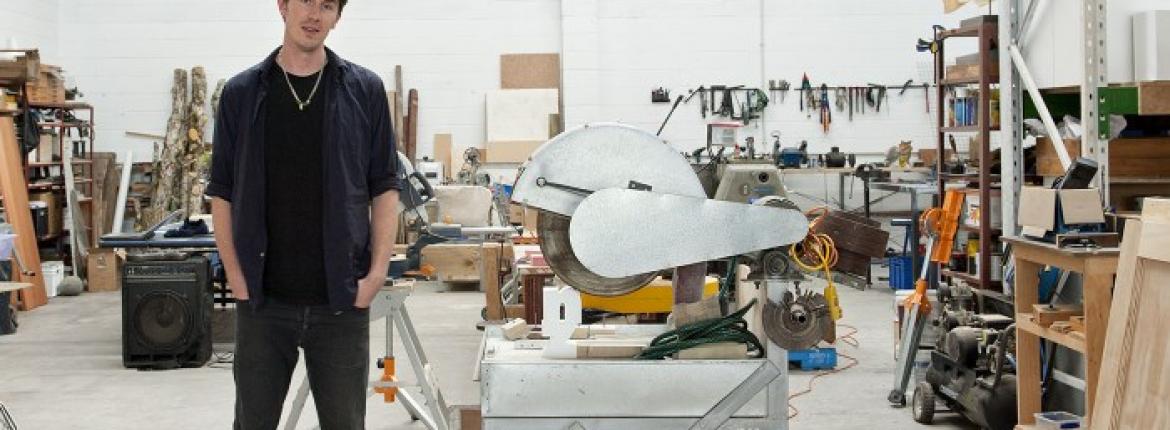Influenced by his father’s dedication to carving and by hours spent in a museum, Joe took his chosen medium and created a unique style. His repertoire includes functional greenstone lightbulbs, intricately carved keys, and a cassette tape made of pounamu that plays a recording of a river. His pounamu slideshows consist of carousels filled with slices of slide-shaped greenstone which, when projected onto a wall, become landscapes. It’s a magical shift from stone to light.
“You get the impression of an aerial view of the mountains – it’s a series of images that slip between aerial views of land, to the cosmos, to underwater.”
Joe has been carving greenstone since childhood, initially working in the family’s tourism business in Rotorua. The tourism mode wore Joe down, though.
“I was interested in fine art. I had a diploma in applied arts, in jewellery, and that opened my eyes to a lot of what was going on in this country, within contemporary craft and art. “I came to the conclusion that, while I felt very privileged to be working with greenstone, I didn’t want to be encumbered by its history.”
He is interested in ‘the everyday’, finding inspiration, for example, in the use of greenstone as tools and weapons.
“I was always impressed by the utilitarian pieces in the museums. They seemed to convey more to me than anything else.”
There is a nice symmetry to the fact that Joe’s work is now included in public collections of museums and galleries, including Te Papa Tongarewa.
Joe has recently started working with stones other than pounamu – material he describes as ‘less loaded’ with cultural significance – such as greywacke and basalt. Recently, he has carved a series of paint tubes called ‘Mono’ from basalt and argillite. “I was trying to find something beautiful in something completely overlooked.”
Another similar paint tube series, called ‘Colours of New Zealand’, refers to the paint company catalogue that takes names from around New Zealand. Joe’s take on the idea tells a story about the natural environment, imbued with some tough cultural history.
I am playing with the edge of beauty. Am I inspired by New Zealand? I guess I am trying to get the measure of the place.
“I am asking questions. But, all the way, from quite early on, I’ve identified that the way to work with pounamu is to embrace the loading that it has – and with that in mind, see if I can use it to express some of the things that I am thinking and feeling.”
Reported by Kathryn Webster for our AA Directions Winter 2011 issue




